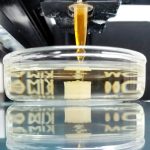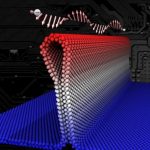Oxygen defects reveal the secret of next-generation memory
The future of computing could be shaped by a new kind of memory called resistive random access memory, or ReRAM.
Unlike traditional memory chips, ReRAM...
Scientists crack 40-year puzzle to unlock energy-saving electronics
Silicon has been the backbone of electronics for decades, but it has its limits—especially when it comes to energy efficiency.
Now, a breakthrough from researchers...
Scientists create greener materials to transform lighting and display technology
Lighting and display screens are everywhere—in our homes, offices, phones, computers, and even in medical devices.
But the technology that powers them comes at a...
Why are video games getting more expensive
The launch of Nintendo’s Switch 2 this year came with the normal level of hype for a new gaming console, but there was also...
How cutting-edge physics could put holograms in your smartphone
The dream of having holograms on your phone, tablet, or even in everyday communication may be closer than ever.
A team of researchers from the...
Scientists 3D-print record-breaking superconductor with soft matter technique
Superconductors—materials that can carry electricity with zero resistance—are the backbone of powerful technologies such as MRI machines, particle accelerators, and the quantum devices of...
Tiny wrinkles in super-thin materials could power the future of electronics
Sometimes, flaws can be a feature. Scientists at Rice University have discovered that tiny wrinkles in super-thin materials—just one atom thick—can be used to...
Scientists find safer alternative to lead perovskites for future electronics
Scientists are always on the lookout for safer and more efficient materials to power the next generation of electronics.
For years, perovskites—crystal-like materials that can...
Hidden dangers: How passkeys can be exploited in abusive relationships
Passkeys are being promoted as the future of online security.
Unlike passwords, they promise stronger protection against hacking and phishing while making logins simpler for...
Scientists set new standards for 3D printing with powders
3D printing has become a key technology for industries such as aerospace, medical devices, and advanced toolmaking.
One of the most important methods is called...










